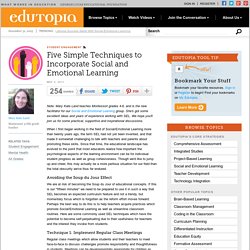

Clinical Supervision. © Mike Consedine 2004 Work is a fundamental aspect of our lives.

It dominates by its sheer centrality. And yet often we pay little serious attention to the work we do, to our suitability for it, to the important relationships that are present in it, or to the way in which our very essence is challenged by it. Further, although we may reflect on what we have achieved, we seldom consider what we have or might become through that achievement. In mental health or psychiatric nursing such reflections are critical, for it is the person we are that we bring to the therapeutic endeavour.
What is Clinical Supervision? The term ‘clinical supervision’ is somewhat confusing. The practice of supervision developed with the early psychotherapists. How to Read Books with Children with Language Delay. Photo by John-Morgan Reading books with your child can provide experiences and vocabulary that he or she may not be exposed to on a daily basis.

Experience allows children to gain understanding. When a child understands vocabulary and situations, he or she has the foundation to use these words in verbal language. Always read with your child face to face with the book next to your face, not in front of your mouth. This will allow your child to see how you move your mouth when you say words, see your facial expressions and engage in eye contact. Reading with your child everyday should start from birth. Initially, choose books with a story and meaning. If your toddler has trouble paying attention to a book, try reading when he or she is “trapped” (e.g., in the highchair eating, in the car seat while traveling, just waking up from a nap in the stroller). Choosing the right books can help target speech and language skills you want to develop.
Stephanie Sigal, M.A. Simple Speech and Language Stimulation Techniques for Children 1-3 Years.
100 Helpful Web Tools for Every Kind of Learner. For those unfamiliar with the term, a learning style is a way in which an individual approaches learning.

Many people understand material much better when it is presented in one format, for example a lab experiment, than when it is presented in another, like an audio presentation. Determining how you best learn and using materials that cater to this style can be a great way to make school and the entire process of acquiring new information easier and much more intuitive. Here are some great tools that you can use to <a href=">cater to your individual learning style, no matter what that is. Visual Learners Visual learners learn through seeing and retain more information when it's presented in the form of pictures, diagrams, visual presentations, textbooks, handouts and videos.
Auditory Learners Auditory learners do best in classes where listening is a main concern. Five Simple Techniques to Incorporate Social and Emotional Learning. Note: Mary Kate Land teaches Montessori grades 4-6, and is the new facilitator for our Social and Emotional Learning group.

She's got some excellent ideas and years of experience working with SEL. We hope you'll join us for some practical, supportive and inspirational discussions. When I first began working in the field of Social/Emotional Learning more than twenty years ago, the term SEL had not yet been invented, and that made it somewhat challenging to talk with teachers and parents about promoting these skills.
Since that time, the educational landscape has evolved to the point that most educators realize how important the psychological aspects of the learning environment can be for individual student progress as well as group cohesiveness. Though we'd like to jump up and cheer, this may actually be a more perilous situation for our field than the total obscurity we've thus far endured. Avoiding the Soup du Jour Effect Technique 1: Implement Regular Class Meetings.
How Does a Person Pick Up an Accent While Living Abroad? Stimulability - The Foundation for Success. In the world of Speech Pathology, stimulability is a key concept.

It is one of the first things a Speech-Language Pathologist will look for once identifying the existence of a misarticulation. So what is stimulability? It is simply the client demonstrating the ability to accurately produce a target sound when given a model for that sound. Stimulability is typically achieved at the sound level first but can be identified at each of the sound production levels leading up to conversation.
These include the syllable level, double syllable level, word and sentence levels. Teamwork That Works: Two SLPs Learn Quickly How to Ride a Wave of Incoming Students. Knowledge and Skills Needed by Speech-Language Pathologists for Diagnosis, Assessment, and Treatment of Autism Spectrum Disorders Across the Life Span. Internet: June 7 2011: Teasing and Bullying. 10 Ways to Motivate the Unmotivated Student. “Every accomplishment starts with the decision to try.” — unknown As a speech language pathologist for grades 3-5 in an elementary school setting, one of the challenges I regularly face is trying to make good progress with students who are unmotivated.

You know, students who don’t want to be in speech, don’t want my help, and generally don’t want to try anything I want them to try. Students who cross their arms and try to avoid making eye contact with me out of fear that I’ll try to get them to–(gasp!) –actually DO some sort of speech work. I admit it, sometimes I’m tempted to just give up, dismiss them, and say, “Well, when they WANT to make progress, they can come back to speech.” So, what’s an SLP to do? Here are some strategies I’ve found useful: 1. 3. 4. 5. 6. 7. 8. Speech & Language Therapy in Practice - Home.